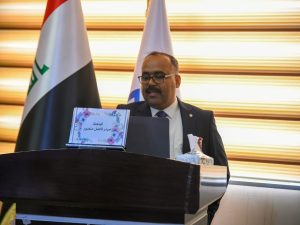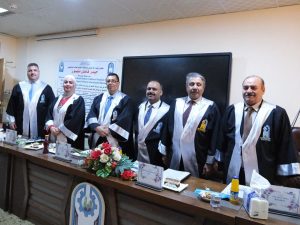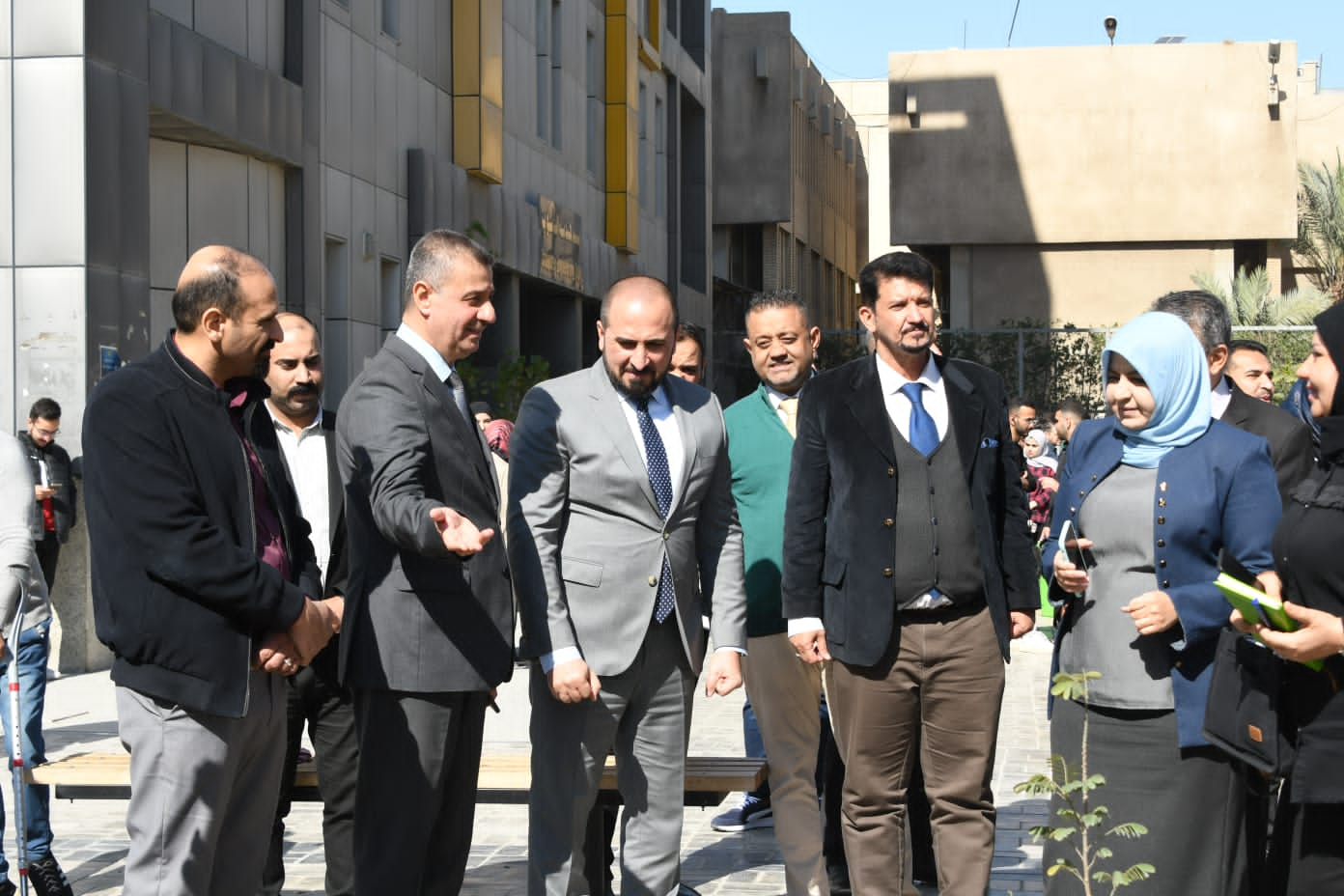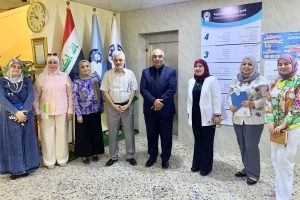The College of Chemical Engineering discussed a master’s thesis on the use of electrocoagulation, Fenton, and electro-Fenton in the removal of malachite green dye from wastewater.
The College of Chemical Engineering at the University of Technology discussed a master’s thesis entitled “Electrocoagulation, Fenton, and electro-Fenton Used for Degradation of Malachite Green from Wastewater” on Tuesday, May 6, 2025. The thesis, presented by student Haider Fadel Mansour, aimed to explore and analyze the mechanisms underlying these processes, as well as to study their applications and comparative performance in treating various types of pollutants. The effects of variables such as current density (C.D.), pH, initial dye concentration (I.C.), electrode distance (D.E.), FeSO₄ 7H₂O, H₂O₂ concentration, and experimental duration on the dye color removal process were studied. The results showed that the best dye removal rate was 99.614% using the electro-Fenton process, with expected values approaching 98.624%. This represents a significant savings in economy, energy, and time compared to both EC and Fenton. Despite the effectiveness of these processes, the thesis committee consisted of Prof. Dr. Ali Hussein Abbar (Chair), Prof. Dr. Riyadh Sadiq Muhammad Salih, and Asst. Prof. Dr. Farah Talib Jassim, and was supervised by Prof. Dr. Salman Hussein Abbas and Asst. Prof. Dr. Faroooq Ahmed Mehdi. The thesis was also evaluated linguistically by Prof. Dr. Ban Kazim Abdul Rahman from the University of Technology and scientifically by Prof. Dr. Hisham Muhammad Saeed from Al-Qadisiyah University and Asst. Prof. Dr. Furat Yasser Sharad from Al-Muthanna University. The thesis was accepted with a grade of “Excellent.” The student’s research resulted in the publication of two research papers in Clarivate and Scopus databases within the first and third quarters. Two research papers are also pending pThe President of the University of Technology visits the sustainable chemical warehouse at the College of Chemical Engineering.







